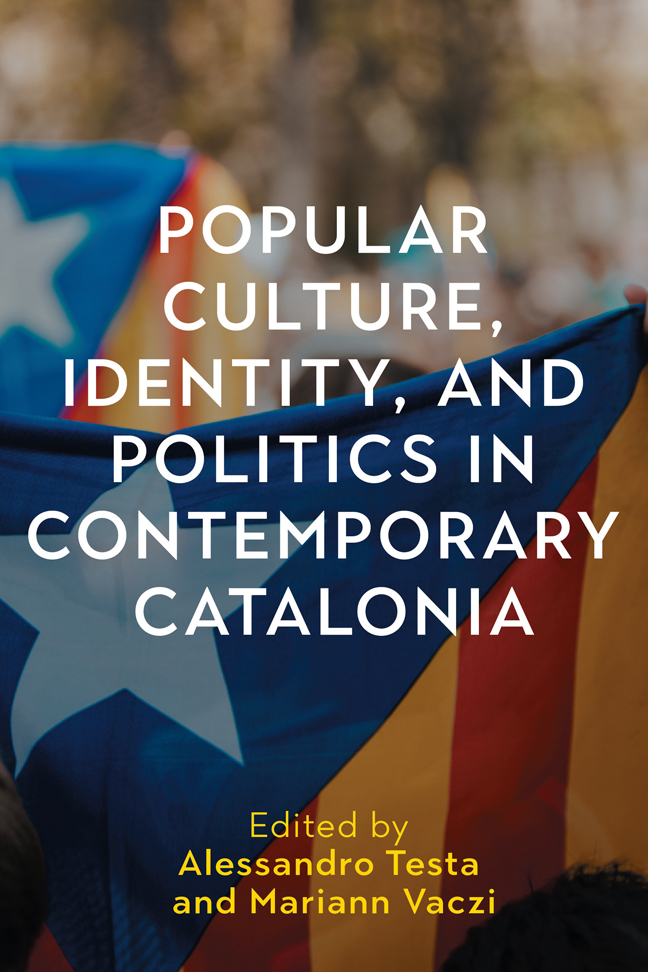Book contents
- Frontmatter
- Contents
- List of Illustrations
- List of Contributors
- Introduction: Culture, Identity, and Politics in Contemporary Catalonia
- 1 Castells, Myths, and Allegories of Nation-Building
- 2 The Ritual Making of Central Catalonia 1: National Identity and the Hanging of the Donkey
- 3 The Ritual Making of Central Catalonia 2: Comparses and the Dynamics of Inclusive Nationalism
- 4 Reclaiming the Cathar Past: At the Crossroads between Identity Politics and Tourist Economies in Catalonia
- 5 The Heritage of the Humiliated: Popular Resistance in Defense of the “Bous” in the Lands of the Ebro
- 6 Communities without Festivities? Community Effects, Transformations, and Conflicts after Covid-19 in Catalonia
- 7 Bon Profit! Food as National Identity in Catalonia
- Afterword: Beneath the Nation: Collective Creation and Civic Need
- Bibliography
- Index
5 - The Heritage of the Humiliated: Popular Resistance in Defense of the “Bous” in the Lands of the Ebro
Published online by Cambridge University Press: 02 March 2024
- Frontmatter
- Contents
- List of Illustrations
- List of Contributors
- Introduction: Culture, Identity, and Politics in Contemporary Catalonia
- 1 Castells, Myths, and Allegories of Nation-Building
- 2 The Ritual Making of Central Catalonia 1: National Identity and the Hanging of the Donkey
- 3 The Ritual Making of Central Catalonia 2: Comparses and the Dynamics of Inclusive Nationalism
- 4 Reclaiming the Cathar Past: At the Crossroads between Identity Politics and Tourist Economies in Catalonia
- 5 The Heritage of the Humiliated: Popular Resistance in Defense of the “Bous” in the Lands of the Ebro
- 6 Communities without Festivities? Community Effects, Transformations, and Conflicts after Covid-19 in Catalonia
- 7 Bon Profit! Food as National Identity in Catalonia
- Afterword: Beneath the Nation: Collective Creation and Civic Need
- Bibliography
- Index
Summary
RECUPERATION AND BOOM OF CATALAN POPULAR CULTURE, BUT NOT ALL OF IT
In Catalonia, the last phase of Franco's dictatorship and the re-establishment of formal democracy led to an intense dynamic of recuperation and reinvention of popular festivities. These were now highly participative festivities that implied the transformation of everyday life environments – like streets and squares – as well as the intense participation of ordinary people (Prat and Contreras 1984; Prats et al 1982). This revival of popular culture was common in European countries throughout the 1970s and 1980s (Boissevain 1992; Vovelle 1985, 187–203). However, in this part of Spain it had a special connotation associated with much contentious history that demanded Catalonia's cultural singularity be converted into political sovereignty.
However, the recuperation of this festive atmosphere was used as an instrument for social cohesion and community identification. It was not a mere replica of what had been the customary Catalan universe before its deactivation – and in the best of cases appropriation – due to Franco's dictatorship. If we had to highlight some of the most singular traits of this restoral, which accompanied Catalonia throughout the advent of democracy after Franco's death, probably the most remarkable would be the displacement of the sources of festive repertoires. Now, what had been the predilection of romantic Catalanism for the Catalunya vella (Old Catalonia) (Prats 1989) – including the counties of Girona and Centre Catalonia – was translated into elements like the castellers (human towers), the sound of the wind instrument gralla, the gegants (giant representations of iconic personalities from a region) and the diables (groups of people that dress as devils and throw fireworks with music), which came from areas composed of el Garraf, Alt and Baix Penedès, Alt and Baix Camp, the Conca de Barberà, the Priorat, and the Camp de Tarragona – in other words, counties south of the capital, Barcelona, and that occupy a greater part of the province of Tarragona. Thus, we are speaking of a territory that extends, following the Mediterranean coastline, between Sitges and below Cambrils.
- Type
- Chapter
- Information
- Publisher: Boydell & BrewerPrint publication year: 2023



